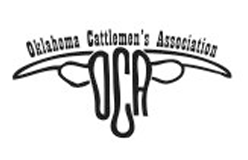
Oklahoma’s new Manufacturing Skills Academy (MSA) has officially opened its doors, launching an education program designed to connect Oklahomans with high-demand careers in the manufacturing industry. As 1 of 9 American Rescue Plan Act (ARPA) projects managed by the Oklahoma Center for the Advancement of Science and Technology (OCAST), this first-of-its-kind program aims to help fill a growing workforce gap by blending technical instruction with work-based learning and real job opportunities.
On Oct. 6, state leaders, manufacturing students and supporters joined MSA staff to celebrate the academy’s grand opening. The 74,000-square-foot facility, located northwest of the State Capitol, operates as a full-production environment. Over a six-month cohort, 25 participants receive paid training in key trade skills while earning certifications and building connections with potential employers.
“The Manufacturing Skills Academy is a catalyst for innovation, preparing Oklahomans for high-demand careers that fuel our state’s economic growth,” said OCAST Executive Director Jennifer McGrail. “By combining hands-on training with real-world experience, we’re not only addressing the state’s workforce challenges but also strengthening Oklahoma’s position as a hub for advanced manufacturing and innovation on a national and global stage.”
Funded in part by an $8.1 million appropriation of ARPA State and Local Fiscal Recovery Funds from the Oklahoma Legislature, this targeted workforce initiative will support economic growth through investment in skilled trades and the manufacturing sector – a key industry in Oklahoma.
“As a lifelong educator, I’ve seen firsthand how opportunity transforms lives,” said Sen. David Bullard, R-Durant. “The Manufacturing Skills Academy is more than a workforce initiative – it’s a bridge between education and purpose. By investing in programs that teach real skills and open doors to meaningful careers, we’re empowering Oklahomans to build not only their own futures but the future of our state. This is what it means to honor the work ethic and innovation that built Oklahoma.”
“When we invest in trade programs like this, we’re not just preparing workers; we’re building the foundation for stronger families, stronger businesses and a stronger state,” said Rep. Kevin West, R-Moore. “This is not just a training center; it’s a launching pad to connect students and workers to real opportunities and help Oklahoma businesses find the skilled workforce they need to thrive.”
Bridging the gap
According to the Oklahoma Manufacturing Alliance, the state is projected to face a workforce shortage of nearly 20,000 people by 2028. An aging population, workforce participation challenges and shifting skill demands are among the factors contributing to the workforce gap.
The MSA program – developed through a multiyear collaboration with Harrison Consulting Group, manufacturers, workforce partners, and supported by state and federal funding – helps close that gap by equipping students with the technical and employability skills necessary to succeed in manufacturing, including certification as a Computer Numerical Control (CNC) machinist, while also providing a stipend to support participants as they train.
“Our first cohort started on September 2, and their excitement about this career opportunity in manufacturing is inspiring,” said Dr. Sharon Harrison, principal investigator with Harrison Consulting Group, which leads engagement initiatives for Oklahoma’s manufacturing industry. “The Manufacturing Skills Academy is the product of strong collaboration with manufacturers, workforce partners and the State of Oklahoma, and we are excited to continue building opportunities for the next generation of manufacturing workers.”
Through direct engagement with Oklahoma manufacturers and using actual manufacturing equipment, students gain direct exposure to potential employers while developing their technical and problem-solving skills that are vital to the industry. MSA’s unique programming positions them to land a meaningful career in a short amount of time.
For more information, check out the State Chamber’s video spotlight of this program

















